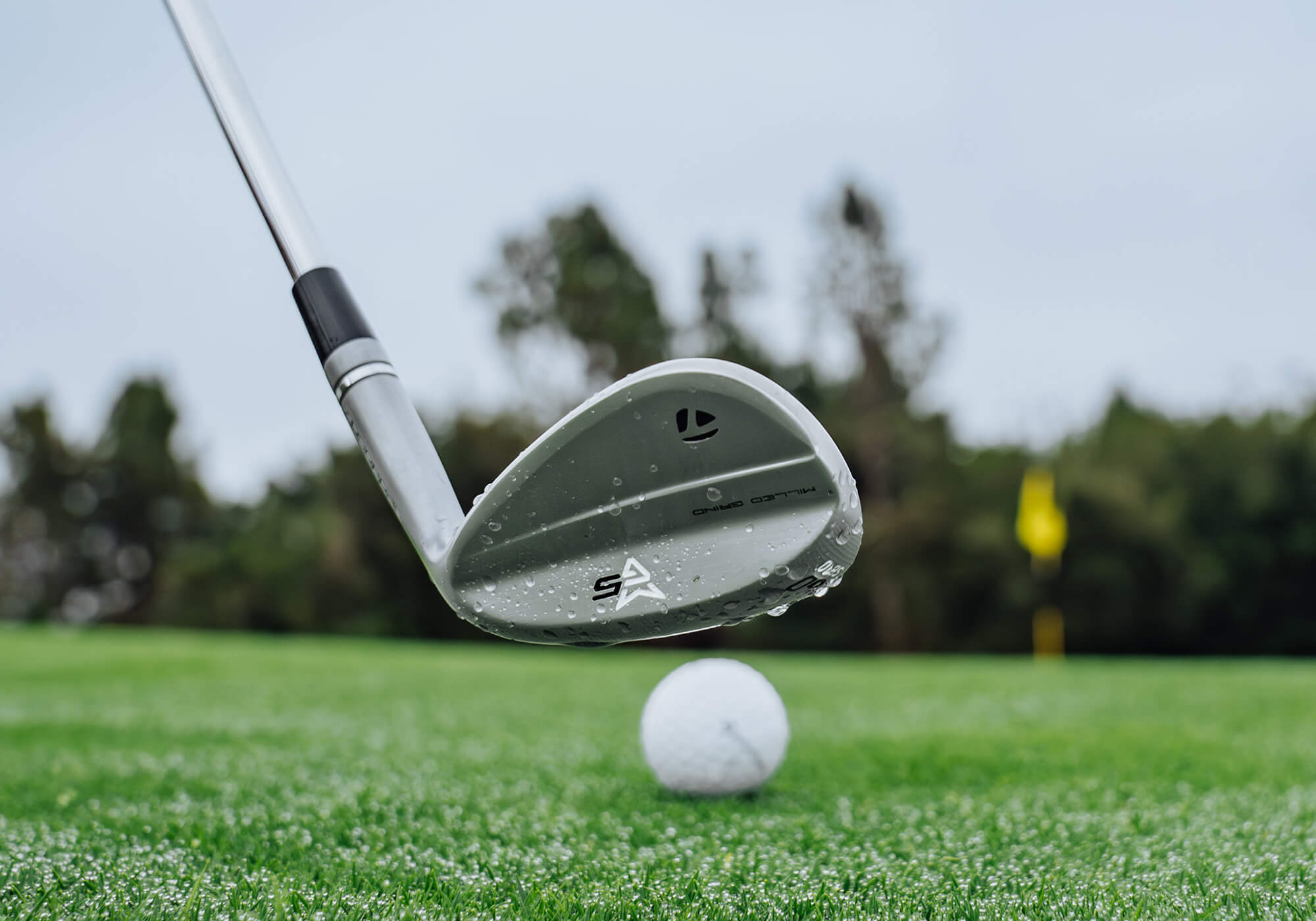I was not great at opening the face of my wedges for a long time. I played everything square. I leaned the handle forward because it felt “safe.” But it cost me strokes.
Once I finally got comfortable opening the face, even just a little, it completely changed what I could do around the greens. I could use the bounce. I could get the ball to stop. I could hit different trajectories without changing my swing.
If you want to improve your short game, opening the face (at least slightly) is essential.

Why you should be opening the face of your wedge
Most everyday golfers set up with a square clubface because that’s what feels natural. A square wedge sits with the leading edge exposed, which means the club wants to dig. Digging leads to:
- Chunked chips
- Thin “skippers” you can’t control
- Low, knuckly shots with no spin
- No ability to land the ball soft
If you rotate the face open just a little, you’ll notice that it:
- Exposes the bounce
- Raises the leading edge
- Creates glide instead of dig
Tour players use an open-faced setup as their default. It’s not saved for flop shots.

How much should you actually open the face? (Less than you think)
This is where golfers get themselves in trouble. “Open the face” does not mean rotate it 30 degrees or lay it flat. Most of the time, the rule of thumb is to turn it to 1 o’clock. If square is at 12 o’clock, you’re rotating it just slightly, a few degrees.
To make sure you do it right:
- Open the face FIRST, then take your grip.
- Slight changes in face angle dramatically influence turf interaction and ball flight, so start slow.
- If you open it too much, you’ll expose too much bounce and create bigger problems for your short game.

Doesn’t an open clubface make the ball go right?
Most golfers hesitate to open the clubface because it “looks” like the ball should shoot out to the right. That makes sense visually but it’s not how wedges actually work. There are two reasons the ball usually stays on line.
1. Your stance adjusts the start line
When you open the face correctly, you also make two small setup adjustments (right-handed golfer):
- Feet slightly left of the target
- Shoulders slightly left of the target
This is not a big shift. It is simply a matter of matching your body to the clubface. Once your stance is a little open, your swing path will follow your body line. This is what keeps the ball from starting right.
2. The wedge swing naturally re-squares the face
Wedges are swung differently from irons. They are played closer to the body with a more upright, vertical motion. That steeper motion moves the hands slightly forward at impact. When the handle moves forward, the clubface wants to return to square.
This is why opening the face produces a higher launch, more spin and better turf interaction.

Don’t forget the bunker
The bunker is another place where opening the face matters just as much as it does around the greens. In fact, it’s one of the easiest places to feel what the bounce is supposed to do.
With a square face, the leading edge digs into the sand and the club loses speed. With a slightly open face, the sole glides through the sand and lifts the ball out with the height you expect from a good bunker shot.
Final thoughts
Opening the face of your wedge gives you more loft and a bigger margin for error on greenside shots. Once you get comfortable opening the face (and not over-opening it), your wedges become more predictable and you can be more aggressive in your short game.
The post How Much To Open The Face Of Your Wedge (And When It Actually Helps) appeared first on MyGolfSpy.
Article Link: https://mygolfspy.com/news-opinion/instruction/how-much-to-open-the-face-of-your-wedge-and-when-it-actually-helps/
